Abstract
This report presents the parasitological, bacteriological, mycological and physicochemical data obtained from both surface water and beach sand of a lake used for water sports. These show that the lake is contaminated in both winter and spring by water which overflows from the River Maine, and is self-purified by a mechanism of 'lagunage'. In summer signs of pollution are at their lowest level although use of the complex is at its peak. Conversely, the amoebic flora, which is independent of the usual criteria of pollution, predominates in summer, and serves as a marker for the need for increased surveillance. The sand of the beaches does not appear to show any infectious hazard. Environmental pressure will doubtless change these data over a period of time, and it is planned to monitor this.
Full text
PDF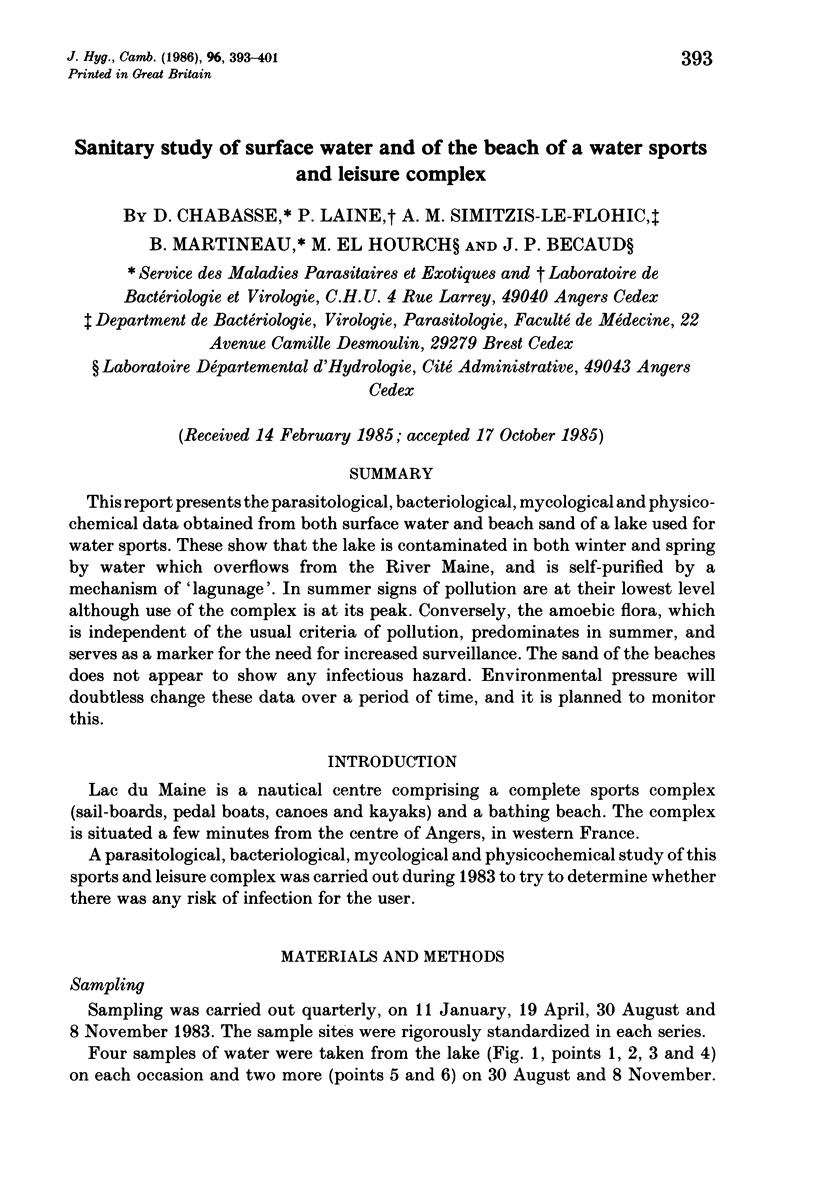
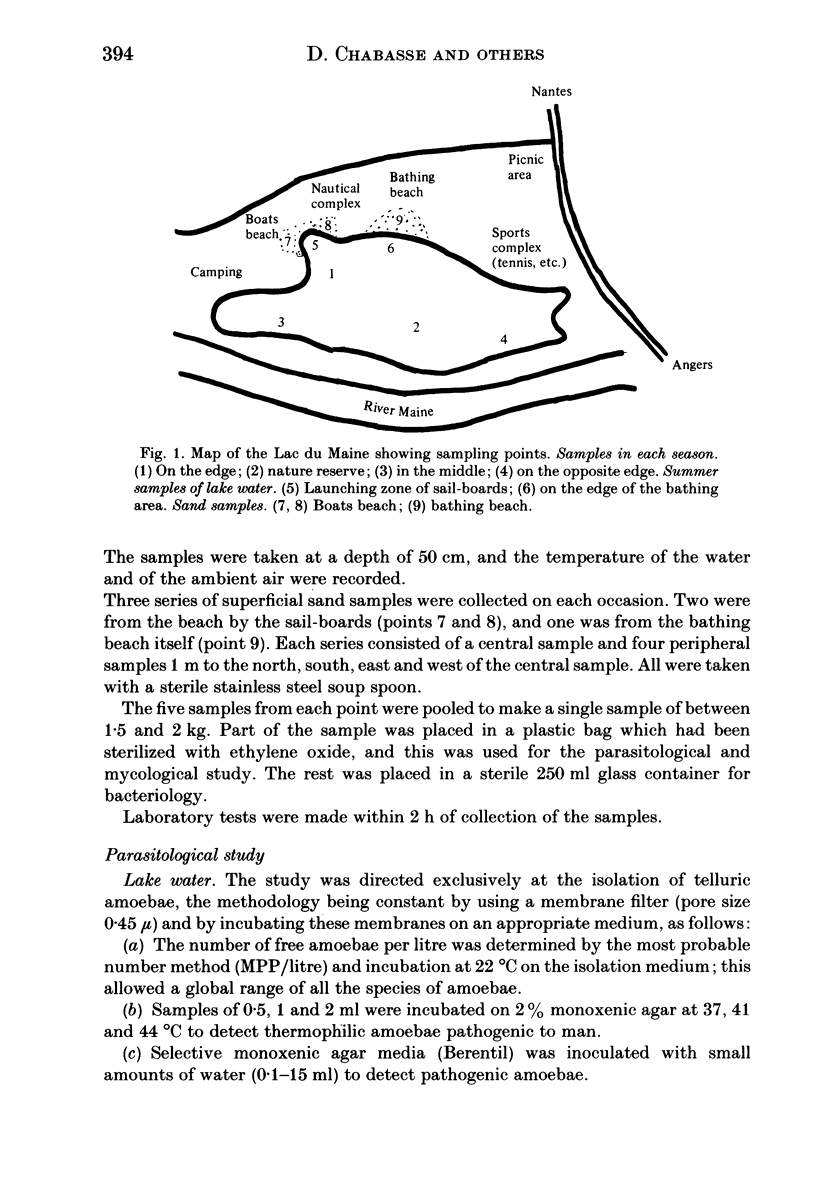
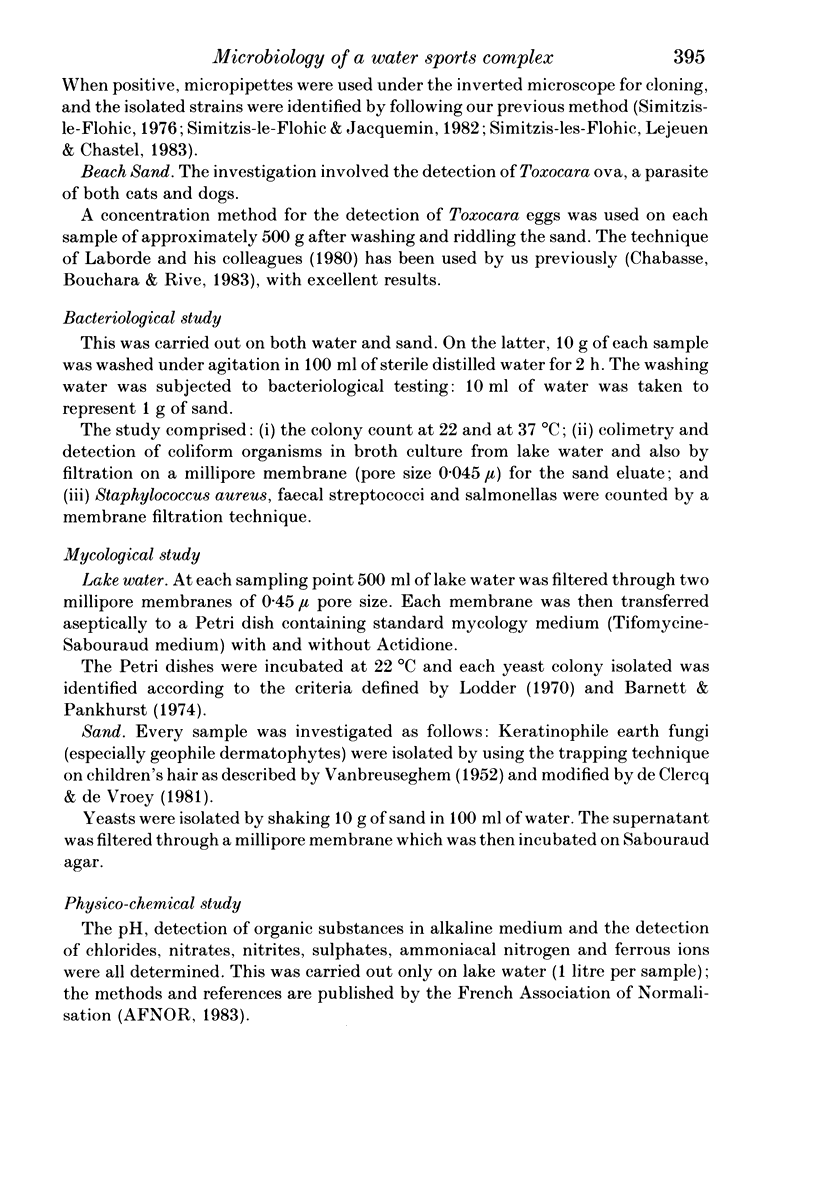
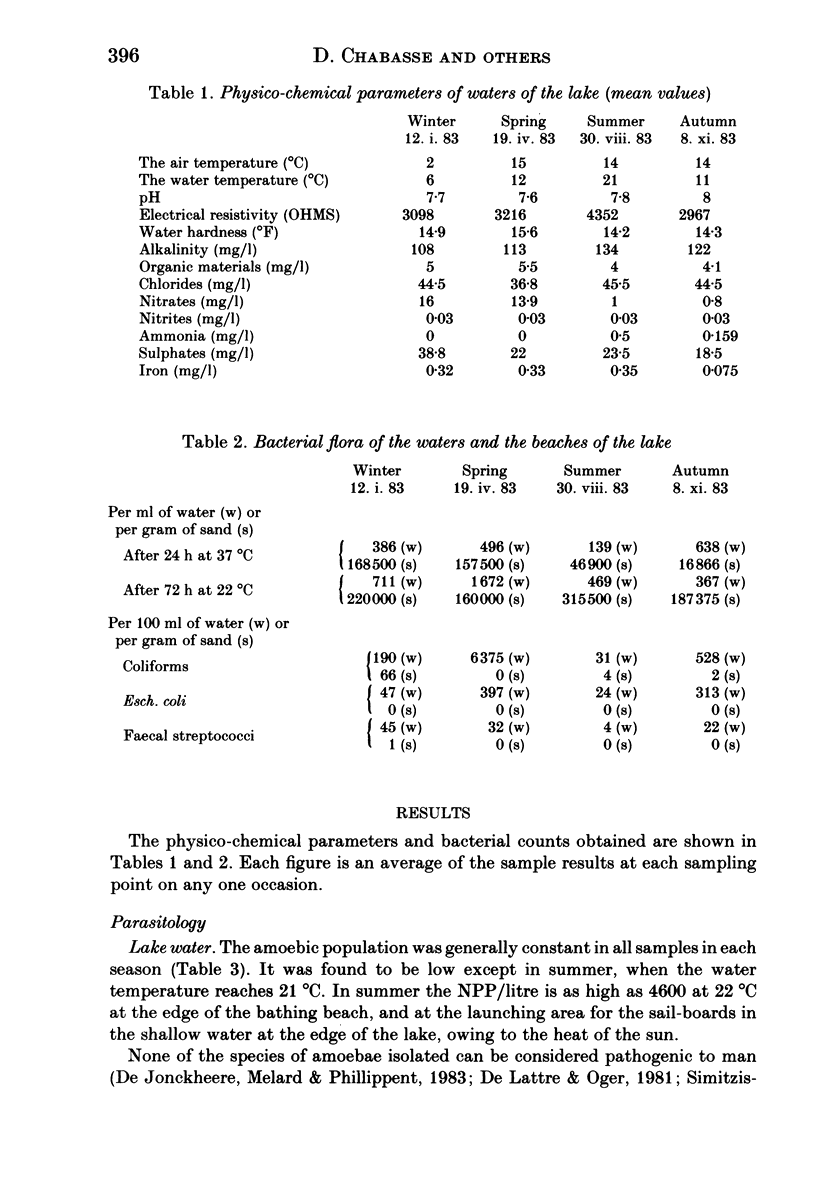
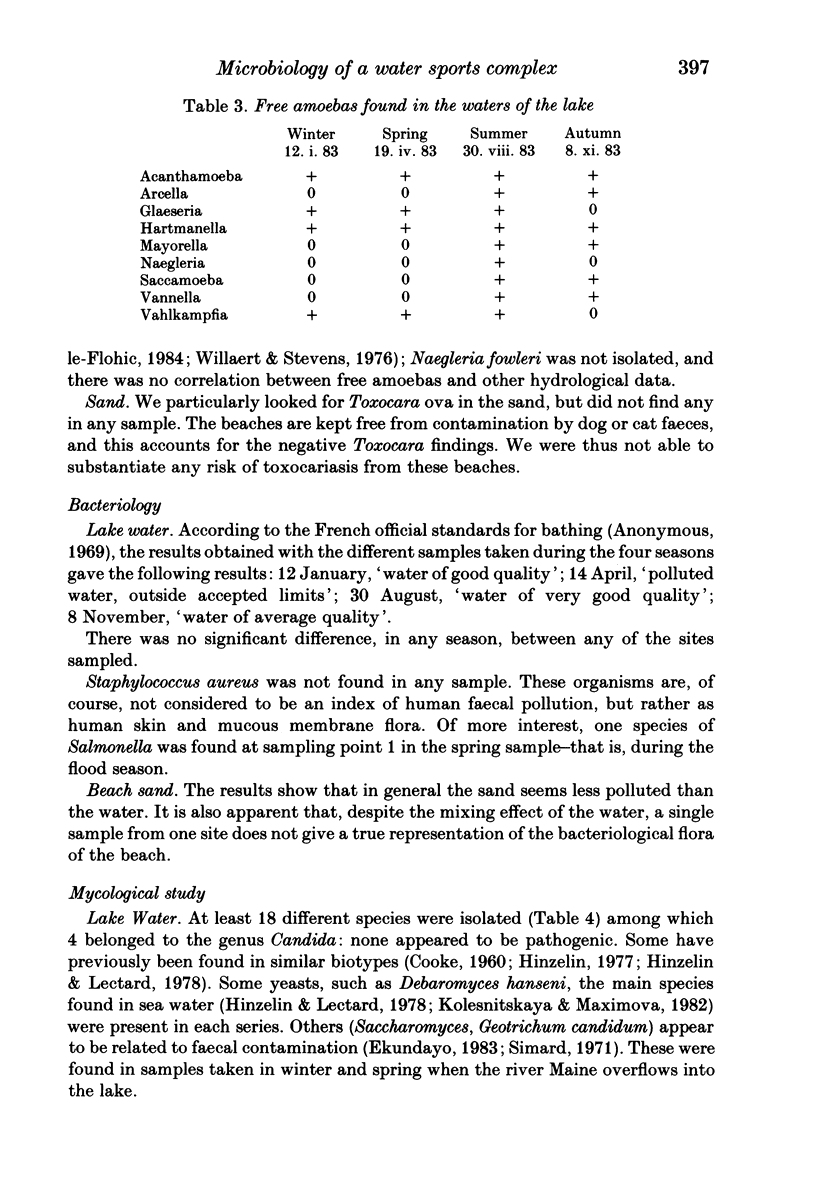
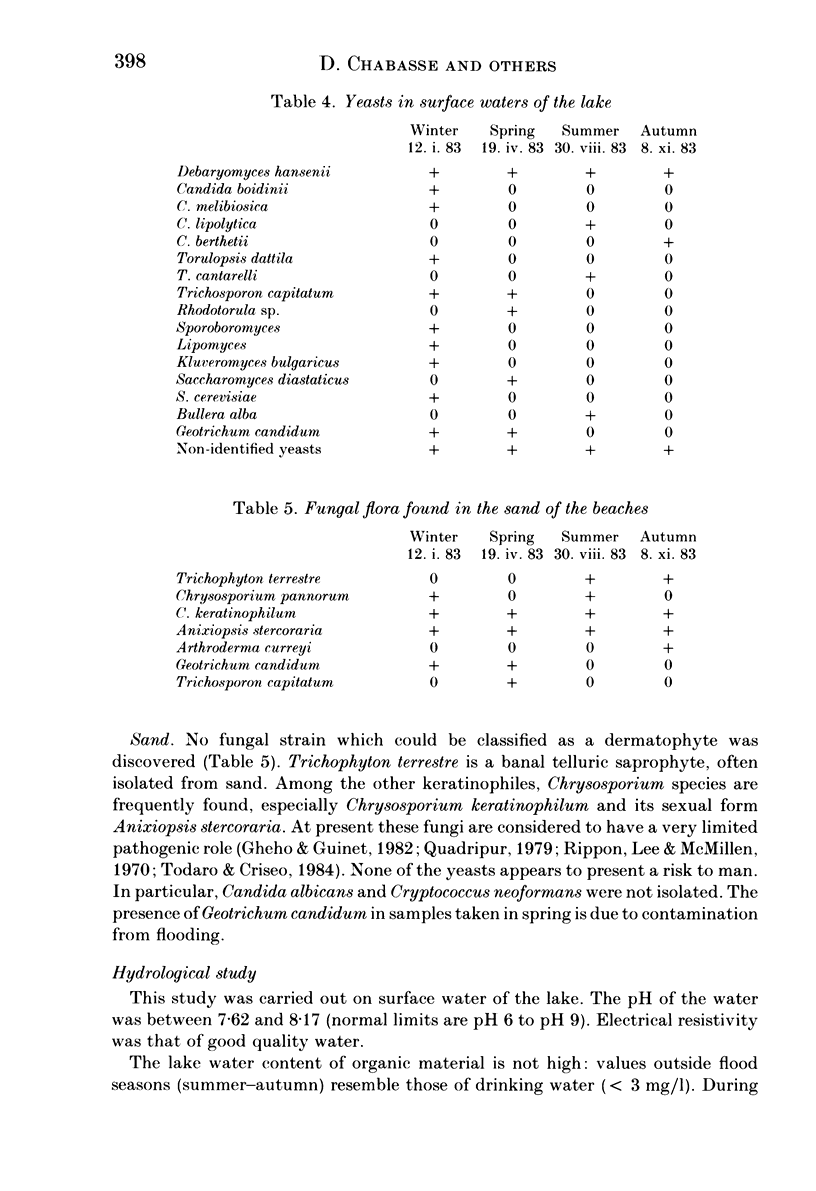
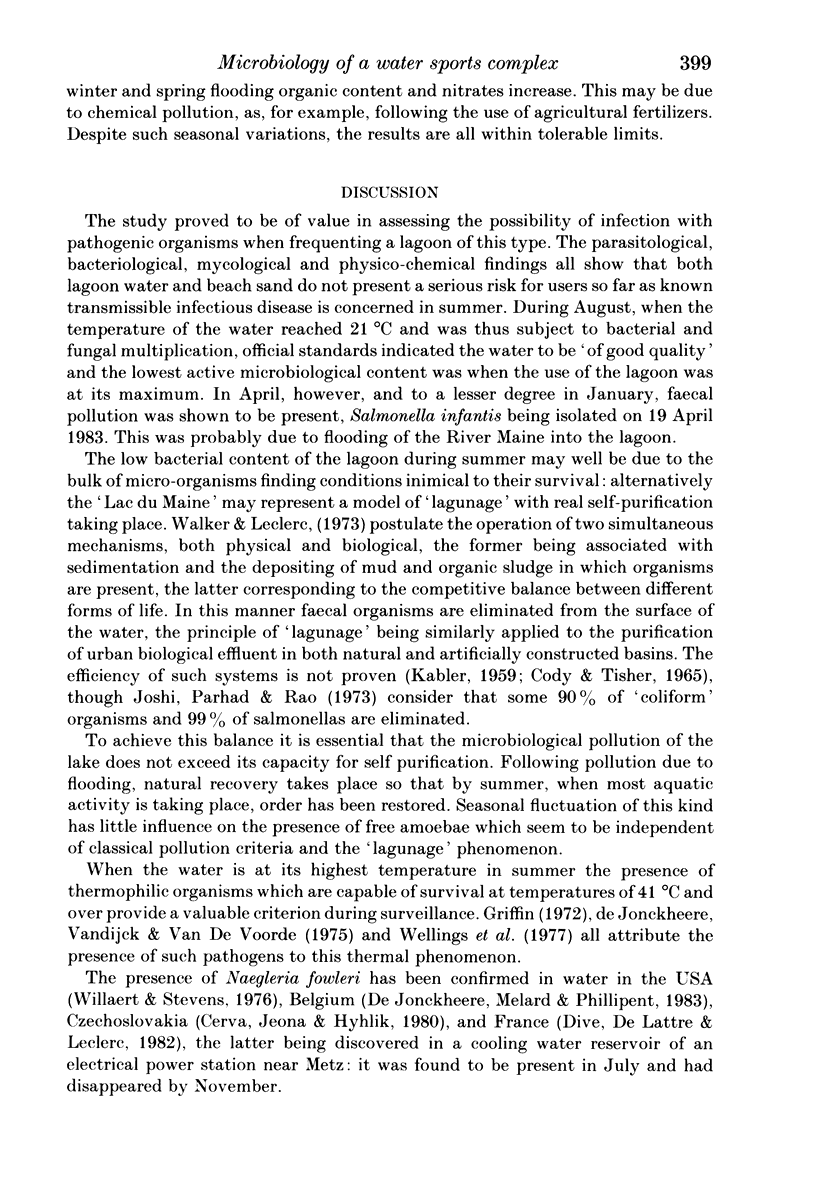
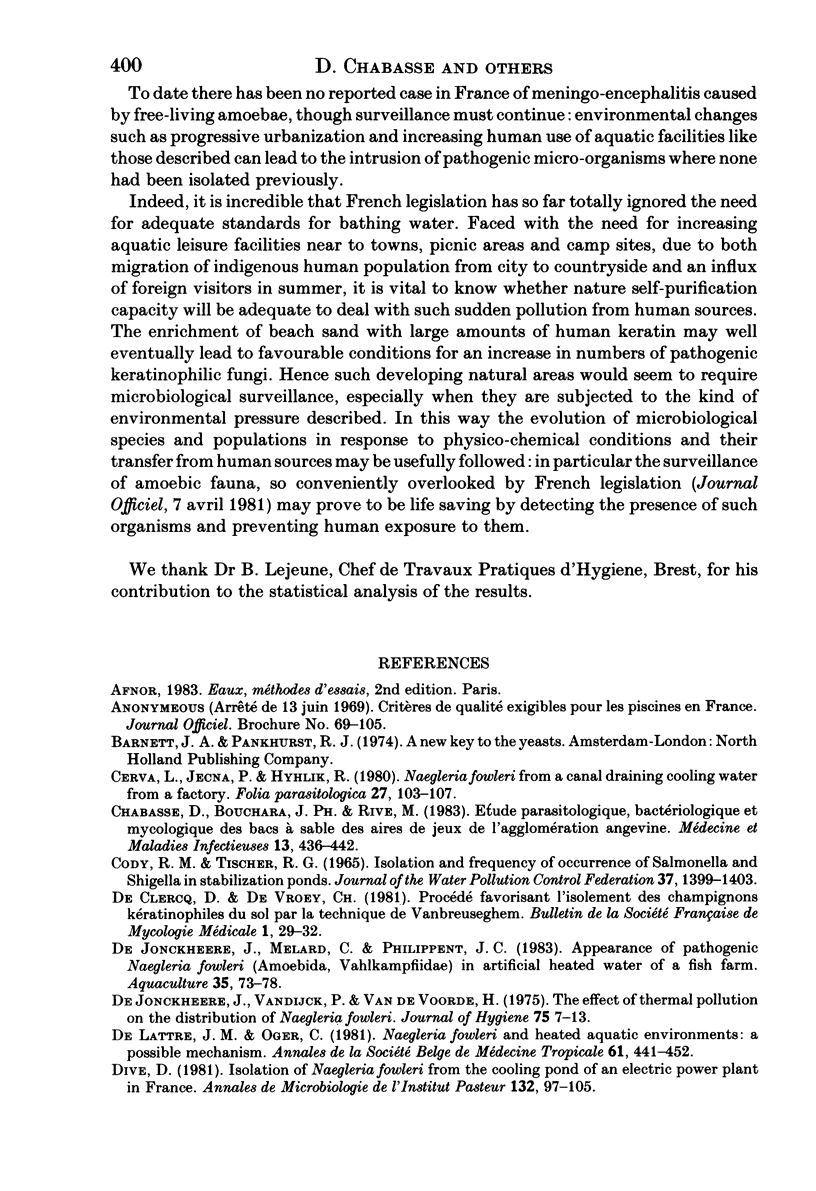
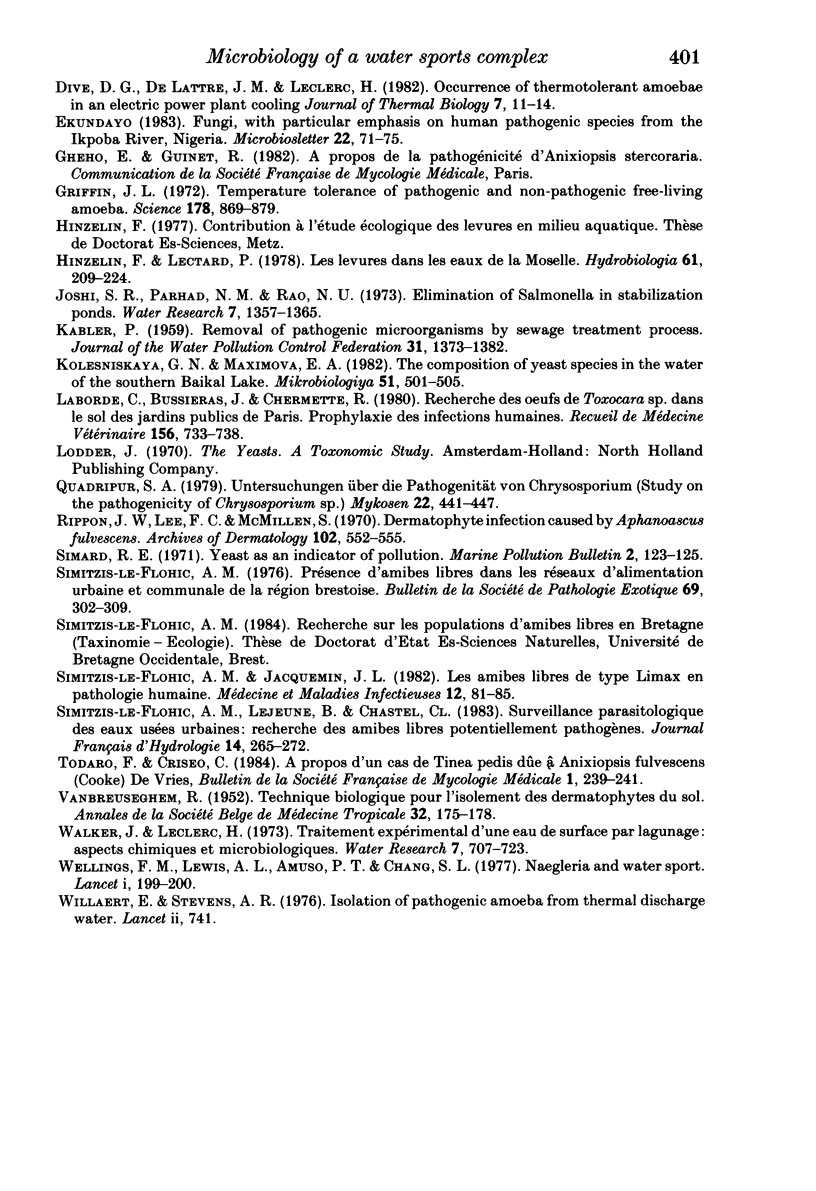
Selected References
These references are in PubMed. This may not be the complete list of references from this article.
- Cerva L., Jecná P., Hyhlík R. Naegleria fowleri from a canal draining cooling water from a factory. Folia Parasitol (Praha) 1980;27(2):103–107. [PubMed] [Google Scholar]
- Cody R. M., Tischer R. G. Isolation and frequency of occurrence of Salmonella and Shigella in stabilization ponds. J Water Pollut Control Fed. 1965 Oct;37(10):1399–1403. [PubMed] [Google Scholar]
- De Jonckheere J., Van Dijck P., Van de Voorde H. The effect of thermal pollution on the distribution of Naegleria fowleri. J Hyg (Lond) 1975 Aug;75(1):7–13. doi: 10.1017/s0022172400047021. [DOI] [PMC free article] [PubMed] [Google Scholar]
- Delattre J. M., Oger C. Naegleria fowleri and heated aquatic environments: a possible mechanism. Ann Soc Belg Med Trop. 1981 Dec;61(4):441–452. [PubMed] [Google Scholar]
- Dive D. G., Leclerc H., De Jonckheere J., Delattre J. M. Isolation of Naegleria fowleri from the cooling pond of an electric power plant in France. Ann Microbiol (Paris) 1981 Jan-Feb;132A(1):97–105. [PubMed] [Google Scholar]
- Griffin J. L. Temperature tolerance of pathogenic and nonpathogenic free-living amoebas. Science. 1972 Nov 24;178(4063):869–870. doi: 10.1126/science.178.4063.869. [DOI] [PubMed] [Google Scholar]
- Rippon J. W., Lee F. C., McMillen S. Dermatophyte infection caused by Aphanoascus fulvescens. Arch Dermatol. 1970 Nov;102(5):552–555. [PubMed] [Google Scholar]
- Simitzis-Le Flohic A. M. Présence d'amibes libres dans les réseaux d'alimentation urbaine et communale de la région brestoise. Bull Soc Pathol Exot Filiales. 1976 Jul-Aug;69(4):302–309. [PubMed] [Google Scholar]
- Wellings F. M., Lewis A. L., Amuso P. T., Chang S. L. Naegleria and water sports. Lancet. 1977 Jan 22;1(8004):199–200. doi: 10.1016/s0140-6736(77)91806-2. [DOI] [PubMed] [Google Scholar]
- Willaert E., Stevens A. R. Isolation of pathogenic amoeba from thermal-discharge water. Lancet. 1976 Oct 2;2(7988):741–741. doi: 10.1016/s0140-6736(76)90035-0. [DOI] [PubMed] [Google Scholar]


